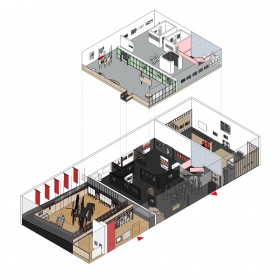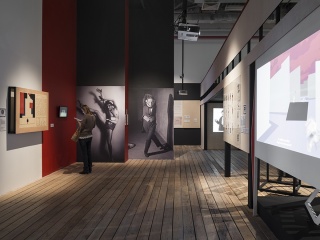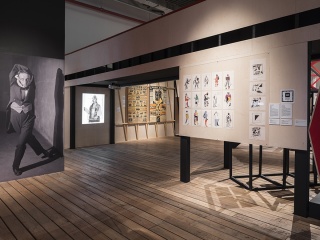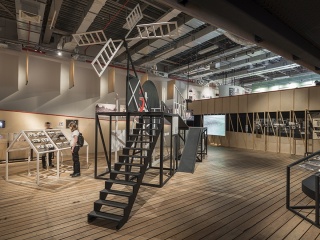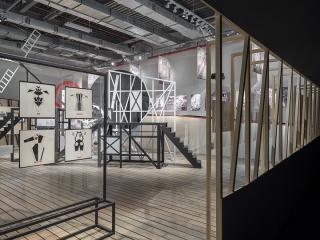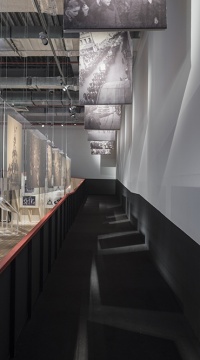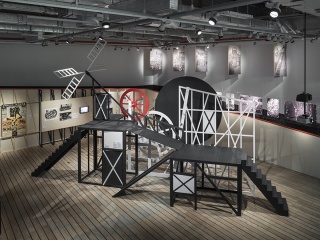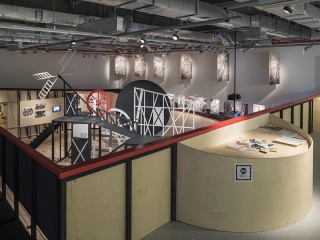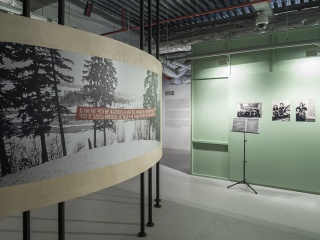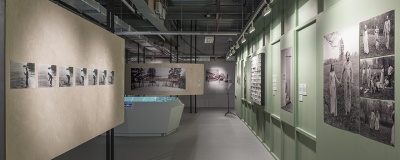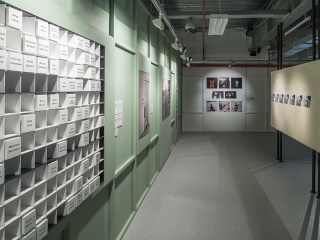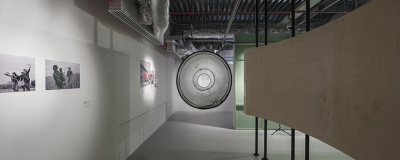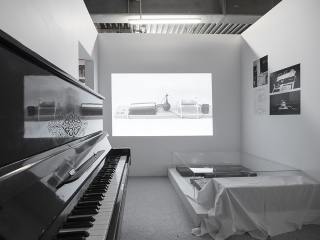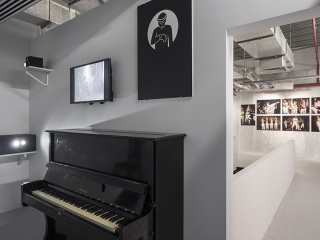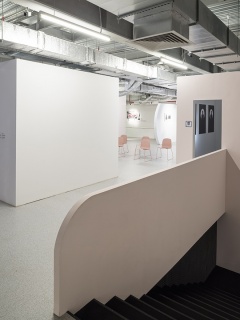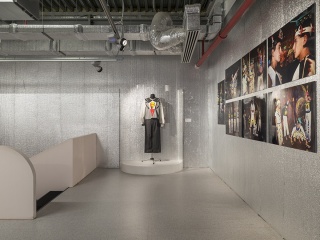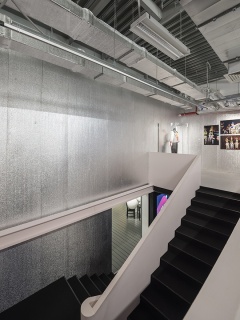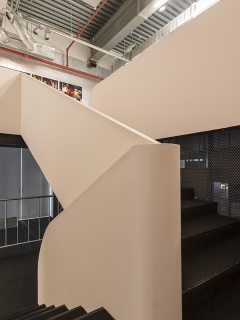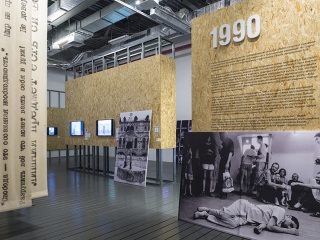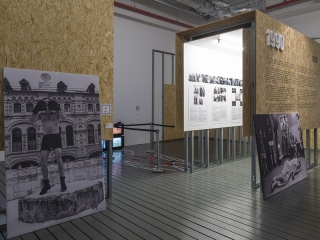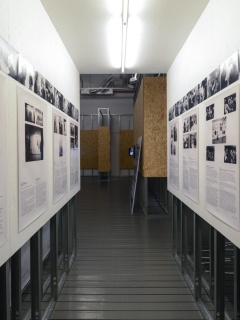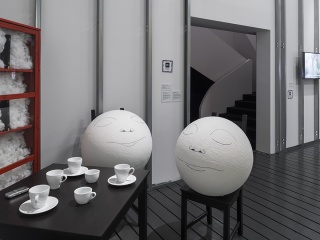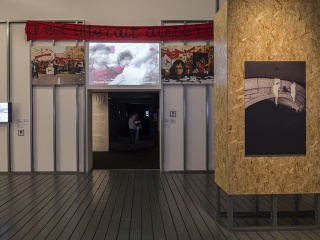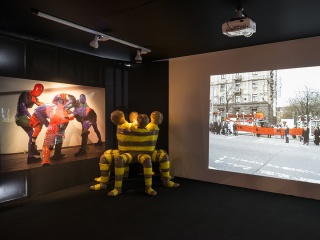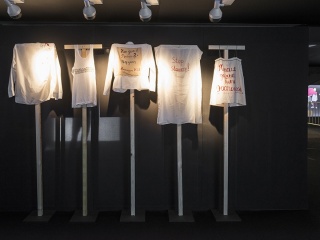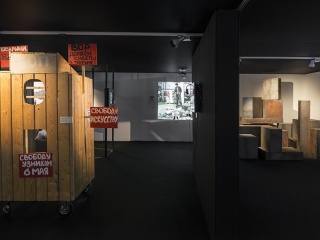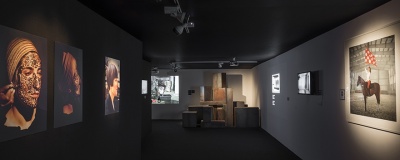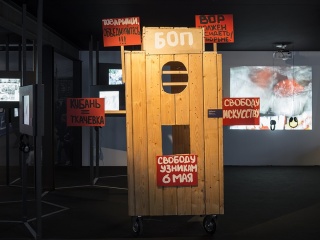The Garage Museum exhibition ‘Russian Performance: A Cartography of its History’ explores a century of the medium’s history and its unique traditions in Russia.
The exhibition was structured chronologically, with the peculiarities of each decade or epoch reflected in the architectural design of the corresponding section of the show. The exhibition space was doubled by constructing an additional level, through which visitors traveled along a carefully curated route.
The first hall of the exhibition covered the decade 1910 — 1920 and presented the artistic experiments of the Russian avant garde. Visitors entered a large space with the grand set design for The Magnanimous Cuckold — a futurist opera. The exhibition stands in this space were inspired by avant garde compositions. The choice of materials; wood, black and red metal, also referenced the period.
After a long pause spanning several decades, the performance genre returned to Russian art in the 1970s. Ascending a panoramic ramp, visitors entered a viewing platform with a ‘modernist’ interior in green and birch plywood.
Stepping into the 1980s, performance art continued to address a small circle of people, who delved into the problematics and meaning of closeted events, such as were held in the artists’ private home or studio, or ‘independent public spaces’ such as parks and fields.
During perestroika in the late 1980s, the situation changed dramatically. Socio political changes throughout the country gave artists a chance to change the format of their work, gain a wider audience, and employ new technologies. The exhibition space tried to reflect this time with a more exuberant palette, such as metal foil and pastel pink.
The 1990s was a period of growing activism, a new generation of movements, which were characterized by ‘direct action’ and the search for new conflicting forms of interactiowith the public. For this exhibition space, untreated grey floor boards and unfinished partitions were chosen to reflect the atmosphere of the ‘reckless 90s’.
In contrast, the early 2000s were a time of apolitical collective performances directed primarily at experiencing the free flow of life and unexpected intrusions onto its territory. Visitors entered a dark space with soft fabric walls, illuminated by countless videos of seemingly multiplying artists working in the genre. By this time performance was accepted as a conventional form of contemporary art and international practices were becoming increasingly apparent among Russian artists.
Architecture: Olga Treivas, Vera Odyn, Asya Baranova, Inna Vostrikova
Client : Garage Museum of Contemporary Art
Curator: Yulia Aksenova, Sasha Obyhova
Status: Completed
Area: 1400 m2
Year: 2014
Photography: Yuri Palmin, Ilya Ivanov
The actions and performances of the Futurists including the famous opera Victory Over the Sun, the daring theatrical ventures of Vsevolod Meyerhold and Sergey Eisenstein, the musical experiments of Arseny Avraamov, the politically oriented Blue Blouse theatre, and the mass revolutionary demonstrations of the era.
Following a lengthy hiatus spanning several decades, performance experienced a revival in Russian art through the practices of the Moscow Conceptualists in the 1970s, which is where the exhibition traces the origins of the medium as we know it today, presenting groups such as Collective Actions and The Nest, as well as artists Rimma and Valery Gerlovin, Vitaly Komar and Alexander Melamid, and Dmitry Prigov, among others.
As the genre progressed into the 1980s,performances tended to take place in the seclusion of private apartments or studios, or in remote fields and city parks. Notable figures of this time include art groups The Toadstools, TOTART, and SZ. Associated with the
so-called «New Wave» were names as VladislavMamyshev-Monroe , Sergey Kuryokhin and his Popular Mechanics Group, and collectivesMid-Russia Heights, World Champions, and The New Artists.The 1990s were marked by the rise of Moscow Actionism. Their works would frequently take place in the streets and squares of the city, led by the movement’s chief exponents, Anatoly Osmolovsky, Alexander Brener, Oleg Kulik, and Avdey
Ter-Oganyan .In contrast, the early 2000s were a time of apolitical collective performances directed primarily at experiencing the free flow of life. International practices were becoming increasingly apparent among Russian artists, as evidenced in figures such as Elizaveta Morozova, Elena Kovylina, and Andrey Kuzkin, and the art groups Summer Radek Community, Escape Program.
